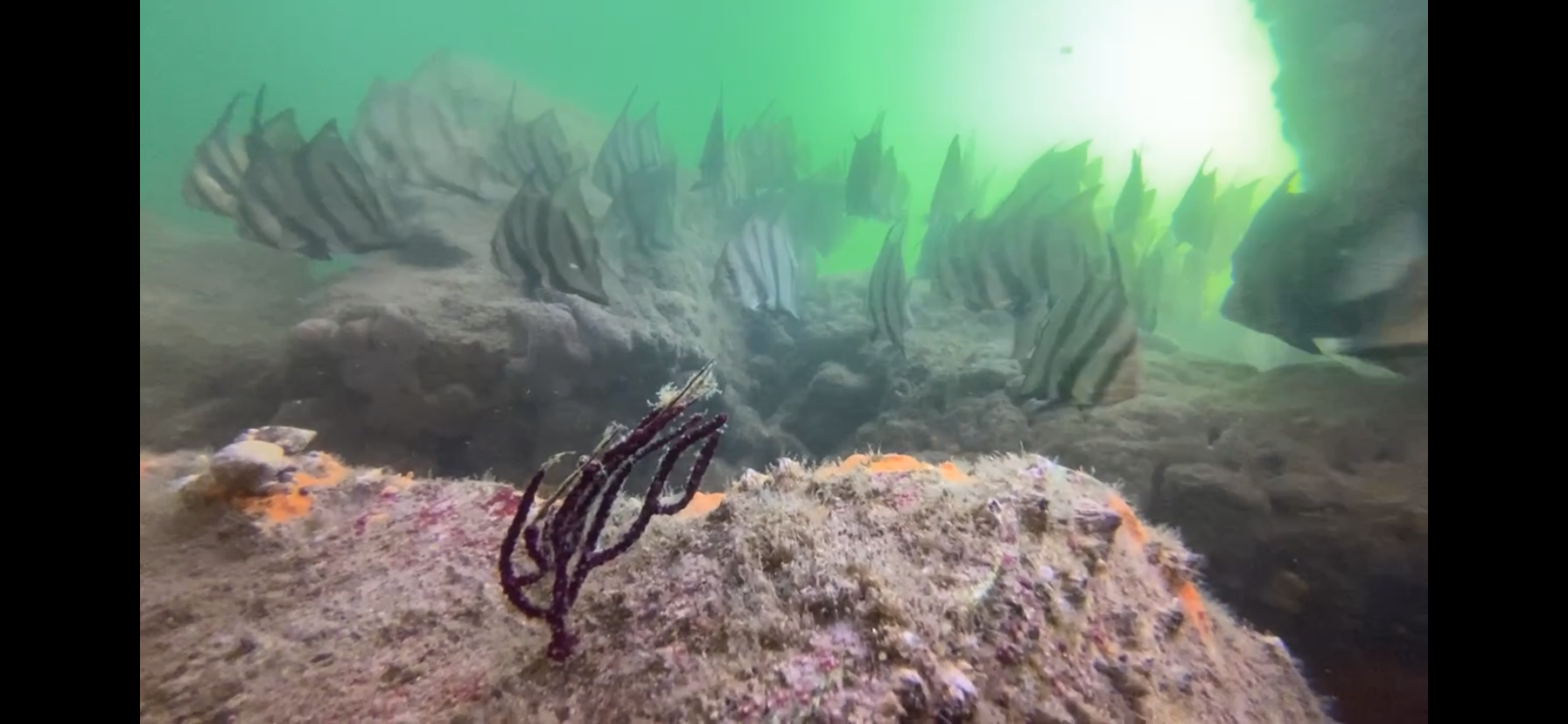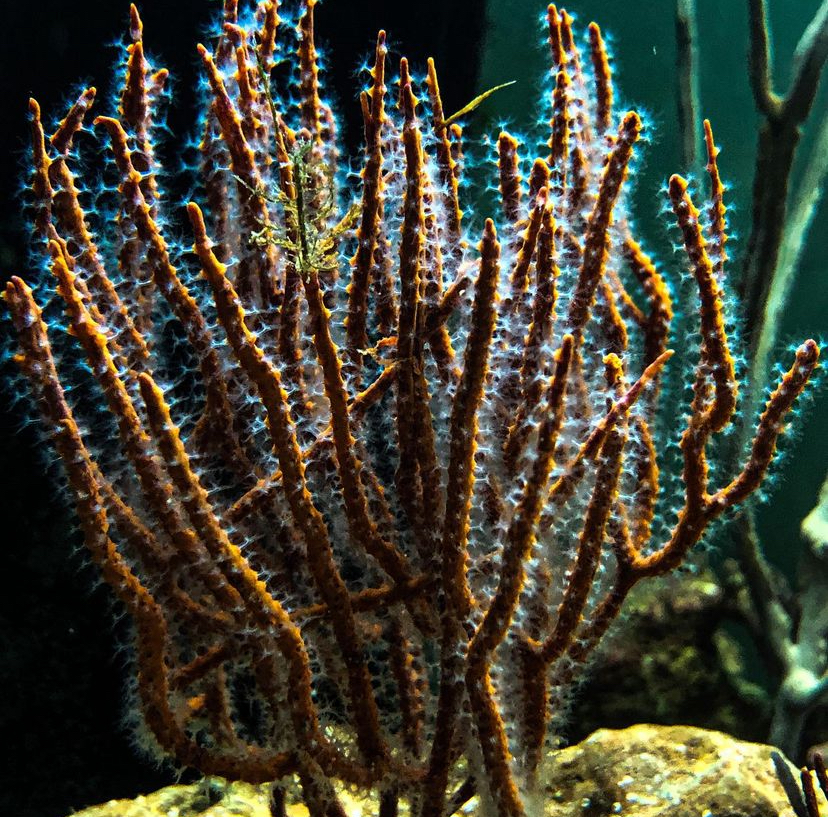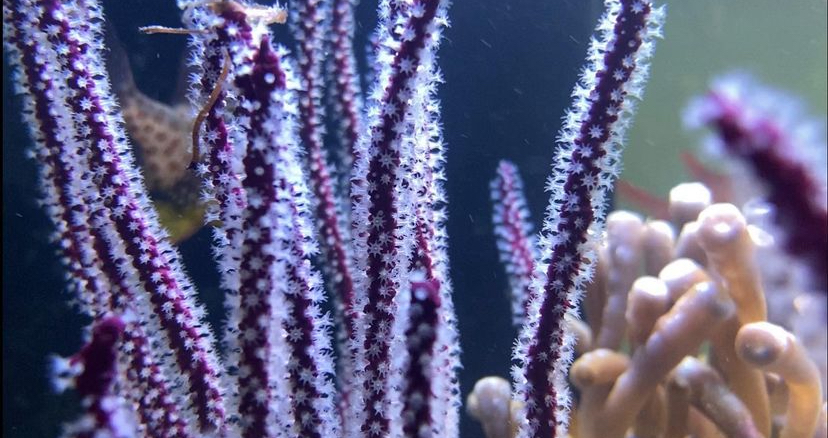Ahhh the wonderful Leptogorgia virgulata, a beautiful non-photosynthetic gorgonian. This wonderful species of gorgonian calls most of the eastern seaboard of the United States home. It can also be found on both coasts of Florida. This species comes in a variety of colors including purple, orange, red, yellow, pink, and some other unique colors. I find it humorous that many NPS corals that are found in the darkest areas of the ocean have some of the most striking colors.
This octocoral ranges in size averaging out at about eight inches. Some specimens I have observed reached upwards of three feet in length. Their shape, from what I’ve noticed, factors into where they are located pertaining to the current. This gorgonian species inhabits a variety of habitats including mangrove estuaries, bridges, shallow reefs, piers, and pretty much anywhere that provides some shade. This species also tends to enjoy areas with some pretty strong currents.

In the wild, I have had different opportunities to observe these gorgonians and can’t help but notice that they have some of the most rapid growth out of any octocoral corals I have ever seen. Some specimens I have observed quite literally doubled in size within a couple of weeks of my first observing them in the water. It is really quite fascinating to observe!
How to keep Leptogorgia virgulata in the home aquarium
This octocoral tends to fare well in the aquarium. I have personally had great success with this species. It will even do well in a well-lit aquarium if fed and kept happy. This is non-photosynthetic so do keep in mind that it will need some supplemental feeding. Feeding this specimen is rather easy. They enjoy phytoplankton and other small particle food. Their polyps are rather small so they won’t be able to consume larger meaty foods like mysis and krill.

Placement with this species is crucial as I feel that it is one of the most important factors in maintaining this specimen in the home aquarium. I have personally had the privilege of keeping one of these specimens in my possession for four years now.
How to feed Leptogorgia
Feeding these specimens can be easy if done correctly. I personally broadcast the tank about ten to fifteen minutes in advance before I feed this gorgonian directly or, as most would call it, target feeding. I broadcast feed ahead of time to encourage the maximum amount of polyp extension to ensure that the gorgonian is getting the most food consumption possible. As the polyps extend, I tend to target feed with phytoplankton and some other small particle food, such as smaller-sized pods and other smaller zooplankton varieties.

When I observe these specimens in the wild, the water is often super rich in plankton. This observation means that these corals are feeding almost twenty-four hours a day and seven days a week! With that in mind, when housing a specimen in a reef aquarium, I recommend feeding your Leptogorgia at least three times a day with the same amount of food every time you feed your specimen.
Where to place gorgonians
Placement is crucial for these gorgonians from my experience. In the wild, they are able to withstand an astonishing amount of current. Therefore, when placing these specimens in an aquarium, keep in mind that they can handle quite a bit of flow. Most people tend to like to see their gorgonians sway back and forth. These, however, tend to just move with the current in whatever direction the current is flowing.
So they don’t really need the “sway” effect most people are looking for; although I think they would be fine either way. I also like to tell people to take a good look at the specimen to observe its growth. This can help you judge how this gorgonian was growing in the wild. For the best results, do your best to picture where these specimens are growing in the wild and try to mimic that environment in your home aquarium.

These gorgonians can be a great addition to most established saltwater systems that have a dedicated reefer. They enjoy some food and some pretty hefty flow, but all of these aspects are easily manageable in the current stage of most home aquarium technology. This hobby has bettered itself in the past few years with high-quality food products as well as products to help reduce nutrients in specific systems that may have higher nutrients due to the heavy feedings most NPS specimens need. I cannot wait for what this hobby holds for NPS specimens in the coming years; only time will tell!



